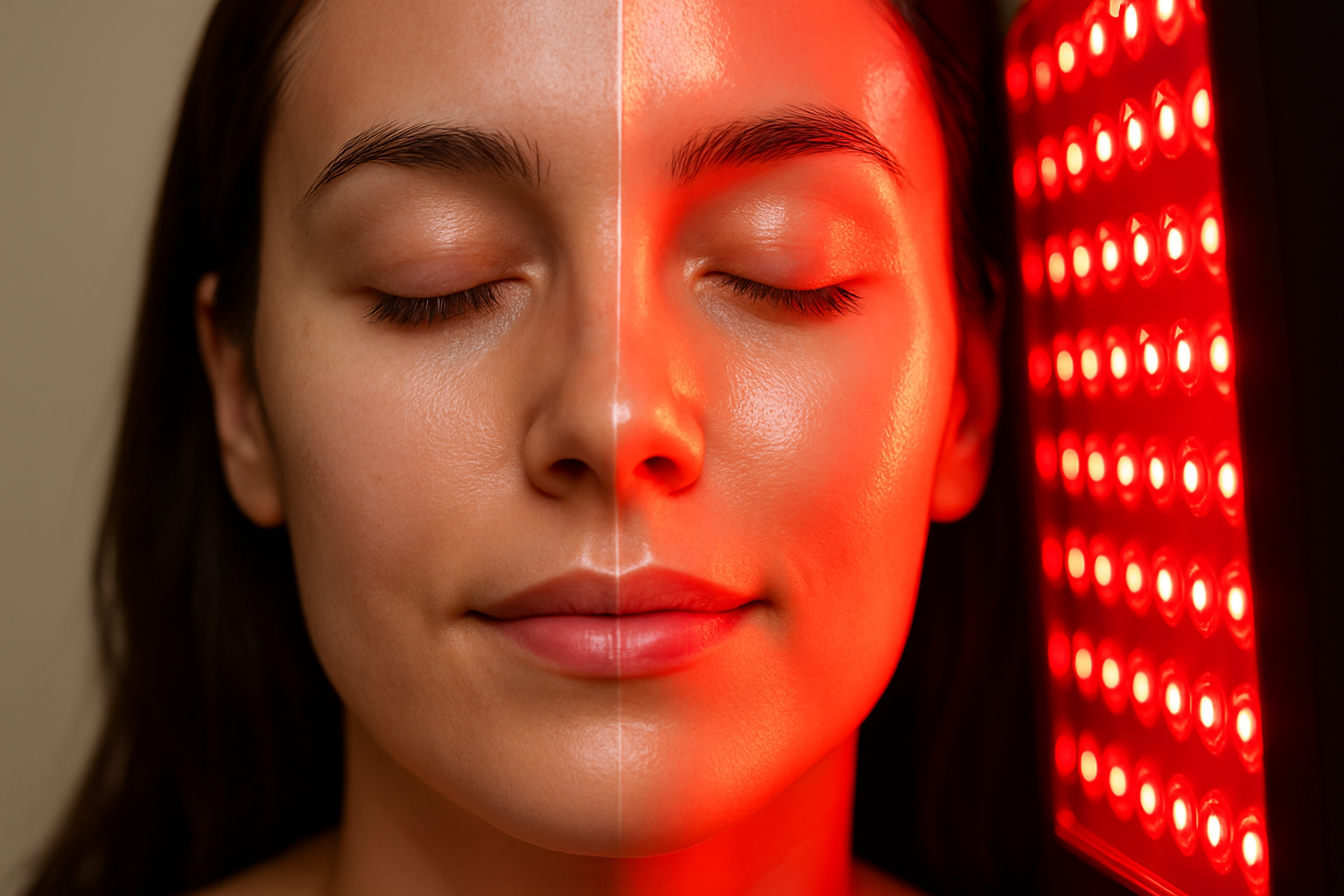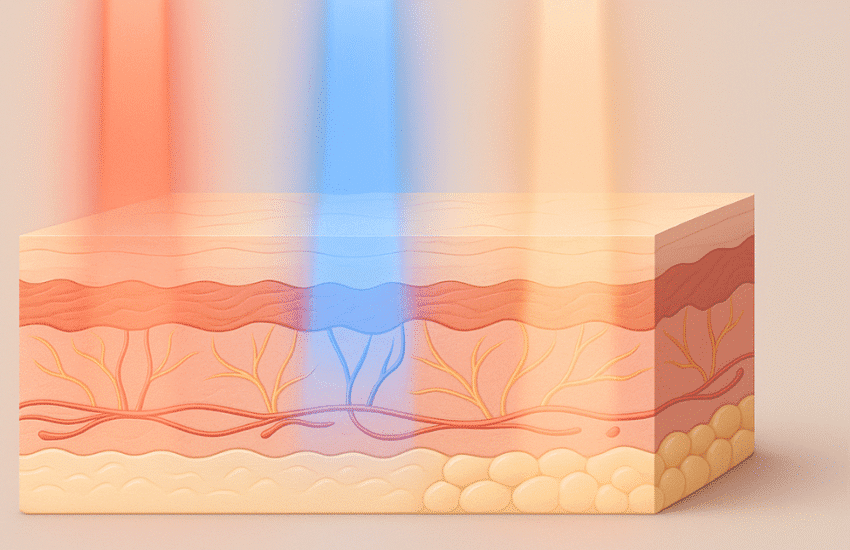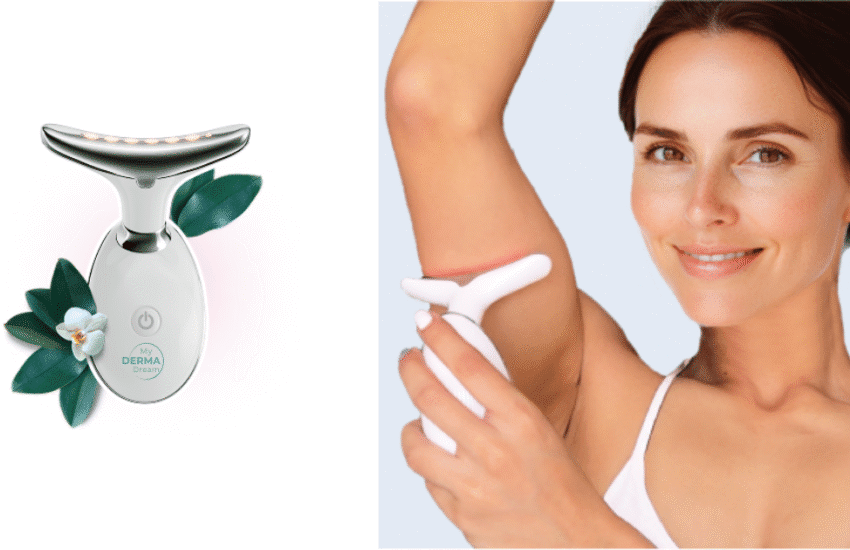Red Light Therapy for Skin: Complete Guide to Natural Rejuvenation
Red light therapy has become a popular skincare treatment due to its gentle way of improving skin without harsh chemicals or invasive procedures. This treatment uses specific wavelengths of light to help your skin’s natural healing processes work better, which leads to noticeable improvements over time.
What makes red light therapy so appealing is that it works with your body—not against it. Rather than forcing change through aggressive treatments, this technology helps your skin repair and rebuild itself from the inside out.
Among the most notable effects of red light on skin elasticity is its potential to stimulate collagen production, which can improve firmness and reduce the appearance of fine lines. With regular use, many people report smoother texture, better tone, and a healthier overall look.
Understanding How Red Light Therapy Rejuvenates Your Skin
Your skin cells work like tiny power plants, constantly maintaining and repairing tissue. Red light therapy gives these cells the extra energy they need to do their job better. When red light wavelengths between 630-700 nanometers hit your skin, they go past the surface to reach the dermis—the deeper layer where collagen and elastin are made.
This process, called photobiomodulation, targets the mitochondria inside your cells. These are like cellular batteries that respond to the light by making more ATP (adenosine triphosphate), which is basically cellular fuel. With more energy available, your skin cells can make more collagen and elastin, the proteins that keep skin firm and bouncy.
Unlike other skin treatments that damage your skin to force healing, red light therapy works purely through energy. There’s no heat damage, UV exposure, or surface trauma. Your skin just gets the energy boost it needs to work better, which leads to improvements that happen gradually and naturally.
5 Key Benefits of Red Light Therapy for Aging Skin
1. Collagen Production and Fine Line Reduction
The most obvious benefit is how red light therapy smooths out fine lines and wrinkles. As we get older, our natural collagen production slows way down. Red light therapy gets those processes going again, encouraging your skin to make new collagen fibers that plump and firm the skin from underneath.
2. Inflammation and Redness Control
If you deal with acne, rosacea, or sensitive skin, red light therapy offers a gentler option than harsh topical treatments. The therapy reduces inflammation at the cellular level, calming irritated skin without causing dryness or making sensitivity worse. This makes it really helpful for people with more reactive skin.
3. Enhanced Wound Healing and Scar Reduction
Red light therapy speeds up your skin’s natural healing by improving blood flow and boosting cellular energy. This means faster recovery from breakouts, minor cuts, and cosmetic procedures. With consistent treatment, it can also help fade existing acne scars and other skin imperfections.
4. Sun Damage and Pigmentation Improvement
Regular red light therapy sessions help normalize how your skin produces melanin while encouraging healthy cell turnover. This combination gradually reduces sun spots, age spots, and other dark patches, leading to more even skin tone over time.
5. Overall Skin Texture and Radiance
The combination of more collagen, better circulation, and improved cellular function results in smoother skin texture and better elasticity. Many people notice a healthy glow that comes from skin that’s working well rather than being temporarily boosted by harsh treatments.
Choosing Between Professional Treatments and At-Home Devices
Professional red light therapy treatments use much stronger machines—typically 10-20 times more powerful than home devices. This higher intensity can mean deeper light penetration and potentially faster results for stubborn skin issues. Professional sessions usually cost between $50-150 per visit and happen 1-2 times per week.
Home devices are convenient and save money in the long run. When picking a home device, look for these specs:
- Wavelength range (630-700nm for skin benefits, with some devices also offering near-infrared wavelengths)
- Power density (at least 10 mW/cm²)
- Area coverage
Handheld devices work well for targeting specific spots, while LED masks and larger panels can treat your whole face at once.
Most at-home sessions last 3-10 minutes and should be done 3-5 times per week for best results. A good home device typically costs $100-500 upfront but pays for itself after a few months compared to professional treatments.
For best results, always use your device on clean skin without any products on it. This lets the light penetrate without interference from serums, moisturizers, or other skincare products that might block the light.
Adding Red Light Therapy to Your Existing Skincare Routine
When and how often you do red light therapy can make a big difference in how well it works with your other skincare products. After a red light session, your skin absorbs active ingredients better, making it a great time to apply serums with vitamin C, hyaluronic acid, or peptides.
If you use retinol, put it on after your evening red light session. The therapy can actually help reduce retinol irritation while making it work better—which is great for tackling multiple aging signs at once.
Gentle exfoliation before treatment helps the light penetrate better by removing dead skin cells that might block the light. Use a mild chemical exfoliant 2-3 times per week, but skip harsh scrubs that could irritate your skin.
Always wait to apply sunscreen and makeup until after your treatment. Strong acids or ingredients that make your skin sensitive to light should also wait until after treatment to avoid any unwanted reactions.
Avoiding Common Red Light Therapy Mistakes
Following Proper Treatment Times
One of the biggest mistakes is not using your device for the right amount of time. If your device needs 10 minutes of exposure, using it for only one minute won’t give you real results. Your skin needs enough light exposure to trigger the helpful cellular changes.
Getting the Distance Right
How far you hold the device from your skin matters a lot. Most handheld devices should be 1-6 inches from your skin (check your manual for exact distances). Hold it too far away and you’re wasting time—the light spreads out and loses power before it reaches deep enough into your skin.
Staying Consistent with Sessions
Being consistent is way more important than doing longer sessions. Using your device randomly throughout the month won’t give you the building benefits that regular use provides. Try adding red light therapy to your calendar so you stick to a routine.
Having Realistic Expectations
Many people quit too early, expecting dramatic results within days or weeks. Cellular repair is a slow process that takes patience. Plan on at least 8-12 weeks of regular treatment before deciding if it’s working.
Keeping Your Device Clean
Keep your device clean so it works properly. Leftover skincare products can block light and make it less effective. A quick wipe with a clean cloth after each use will keep your device working well and help it last longer.
What to Expect: Red Light Therapy for Skincare Results Timeline
Your first few sessions might give you subtle but encouraging signs—less redness and a temporary glow that lasts about 24 hours. These early improvements show that your skin is responding and hint at bigger changes happening underneath.
During weeks 1-2, you’ll probably notice improvements in overall skin tone and less inflammation. People treating active acne often see existing breakouts heal faster before they get fewer new ones. The cellular process needs time to regulate oil production and bacterial activity.
The biggest changes usually show up between weeks 4-8. Fine lines start to soften as collagen production increases. Skin texture gets smoother and more refined. Overall tone becomes more even and brighter.
Different skin problems improve at different speeds. Inflammation and redness often get better within days to weeks. Texture issues and minor wrinkles typically take 4-8 weeks to improve. Deep wrinkles, serious sun damage, and stubborn dark spots usually need 12 or more weeks of consistent treatment.
If you’re treating melasma or dark spots from old acne, you need extra patience since these deeper pigment issues typically improve around weeks 8-12. The good news is that results tend to stick around once you get them.
After you reach your goals, maintenance sessions 1-3 times per week help keep your improvements. Many people say their skin looks best after 6 months of regular treatments, which shows that sticking with it really works.
Final Thoughts on Red Light Therapy for Skin Health
Red light therapy is a solid addition to non-invasive skincare options. By working with your skin’s natural repair systems, it can tackle multiple problems at once—from wrinkles and texture issues to inflammation and scarring.
Success with red light therapy comes down to three things: picking the right device, using it correctly, and having realistic expectations about timing. Whether you go for professional treatments or buy a good home device, adding this to a complete skincare routine can make your other products work better too.
Remember that consistency matters most. Give your skin at least 8-12 weeks of regular treatment before deciding if it’s working. While everyone responds differently, the research supporting red light therapy keeps growing and shows real benefits.
If you have specific skin conditions or concerns, talk to a dermatologist before starting any new treatment. They can help you figure out if red light therapy is right for your skin type and guide you toward the best approach for your specific needs.


